The sedimentary rocks of the lower Cantwell Formation in Denali National Park and Preserve harbor a bonanza of fossils from about 70 million years ago. Not only are there tracks of an array of dinosaur types (theropod including bird, hadrosaur, and ceratopsian), there are also fossil traces of flora and other fauna—including pterosaurs, a group of flying reptiles related to dinosaurs—that coexisted with dinosaurs in the Late Cretaceous Period.
Rocks of Denali ... provide the richest record of avian biodiversity from a single rock unit anywhere in the world.
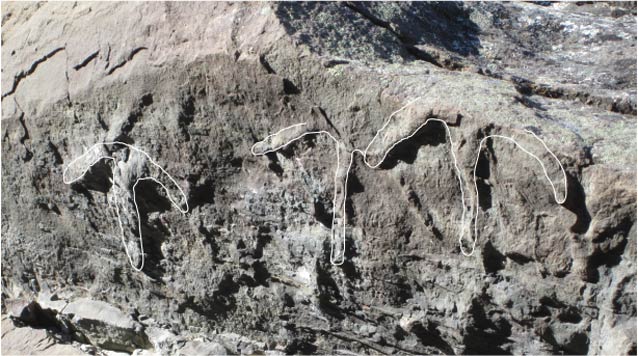
Fossil bird footprints in the park are well-preserved and amazing in their diversity.
Along with park staff, summer Geological Society of America interns, and paleontology colleagues, Dr. Tony Fiorillo of the Perot Museum of Science and Nature (Dallas, TX) has been conducting systematic searches for fossils in the lower Cantwell Formation, a roughly east-west band stretching through a section of the park. Sites of fossil bird finds are (from east to west) Fang Mountain, Double Mountain, Sable Mountain, and Cabin Peak. Several interesting findings have emerged as Fiorillo has studied fossil bird tracks at all four sites:
- Based on fossil bird tracks found in Denali, Fiorillo has declared that the lower Cantwell Formation in Denali has the richest record of fossil bird diversity from a single rock unit in the world.
- Small dimples amongst shorebird-like tracks and water ripple marks appear to be traces where birds probed the mud with narrow bills--early fossil evidence of feeding behavior.
- Enough differences exist between some of the bird tracks found in Denali and known tracks elsewhere in the world to attribute two types of Denali fossil bird tracks to new species.
- Because some of the fossil bird tracks found in Denali are also found elsewhere in the U.S. and Asia, these birds likely used Alaska as a seasonal nesting ground some 70 million years ago, just as modern birds that nest in Denali migrate from around the globe.
Bird Diversity in Denali
The fossil bird tracks found in Denali range from the size of a sparrow to that of a very large heron. Because the lower Cantwell Formation was deposited near its current latitude in Denali, the bird track fossils found in this unit are the highest latitude (i.e., most polar) fossil bird tracks known at this time.
So far, Fiorillo and others have found several hundred bird tracks and several dozen traces of bill probes made during feeding. Bird tracks have been found in deposits believed to have been laid down near lakes and rivers. Because of the thickness of the sedimentary rock unit (thousands of meters or several thousand feet), there are many bedding planes that could contain dinosaur or bird tracks. Some bird tracks are associated with dinosaur tracks in the same rock plane, and some are in layers between those that contain dinosaur tracks.
Some characteristics of fossil bird tracks that are used to identify the species or to compare them to previously described fossil bird tracks are the number of toes, the curvature of the toes, whether a toe points backward, and the presence of webbing or toe pads.
The tracks are not directly correlative with modern living birds. However, many are similar to birds in the modern order Charadriiformes (shorebirds and relatives, such as the Spotted Sandpiper). Ignotornis had feet with four toes—three pointed forward and one extended back. Tracks of Aquatilavipes have three toes, all pointing forward. Bird tracks attributed to Uhangrichnus have webbed feet similar to those of a duck.
Tracks of New Fossil Bird Species
Two new species of birds were described based on their fossil tracks. Huge heron- or crane-like tracks were placed in the same genus that had been described elsewhere (Magnoavipes), but the tracks were too large to be those of any previously described species. Fiorillo selected the name for the new bird species, asking, “What better name for the new fossil bird with huge tracks than denaliensis—named for the mountain that is the ‘high one,’ located in the same park where the fossil was discovered?”
A new fossil bird species of Gruipeda was also named based on the size of the track. The species name vegrandiunus means “little one,” and the tracks are smaller than described for previously named species (see photo and diagram below).
Where Are Fossil Bird Tracks Found in the World?
The assemblage of bird track fossils found within the lower Cantwell Formation includes bird tracks found in Asia, North America, or both continents. This overlap of distribution suggests that some birds used Alaska as a bridge to migrate between Asia and North America. It also implies that birds have migrated to Alaska from elsewhere for millions of years.
Catalog of 70-million-year-old Fossil Bird Tracks in Denali
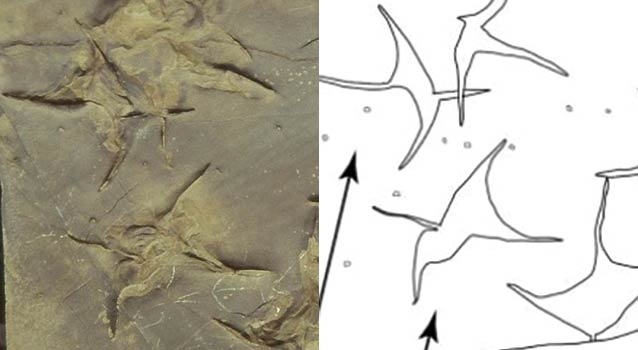
Ignotornis
Ignotornis had four toes, three pointing forward and one to the rear, similar to a sandpiper (shorebird). Small depressions are bill marks made while feeding in the mud.
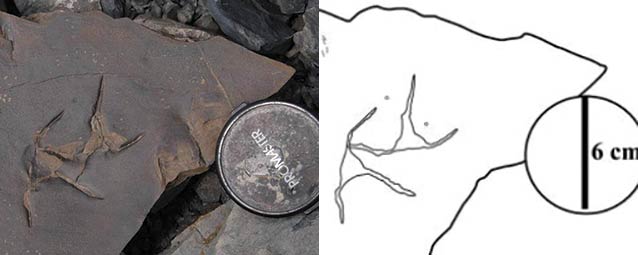
Aquatilavipes
More than 30 tracks have been found and measured. These birds had three toes.
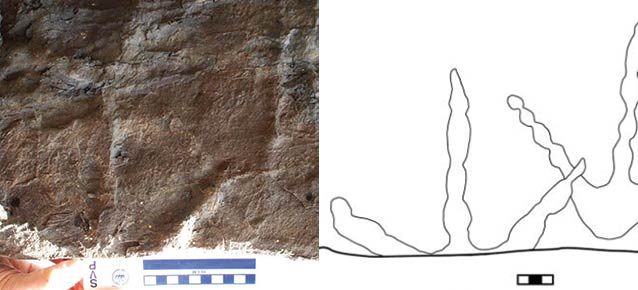
Magnoavipes denaliensis
This new species of fossil bird was a large heron-like bird with three toes and toe pads (see pad within red circle).
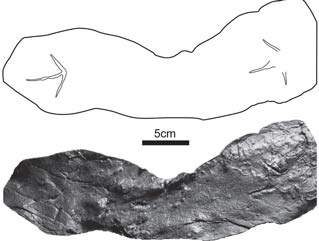
Gruipeda vegrandiunus
Gruipeda vegrandiunus is a new species of fossil bird, named because the tracks are small (vegrandiunus means “little one”). Traces of webbing are present (see webbing in red circle).
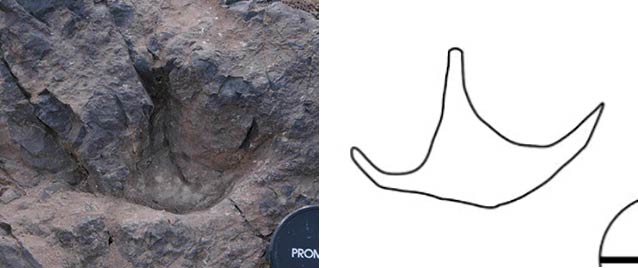
Uhangrichnus
Tracks of Uhangrichnus show what is thought to be webbing between the digits. The outer digits curve toward the central one. Two sizes of these tracks have been found.
Last updated: May 18, 2016
